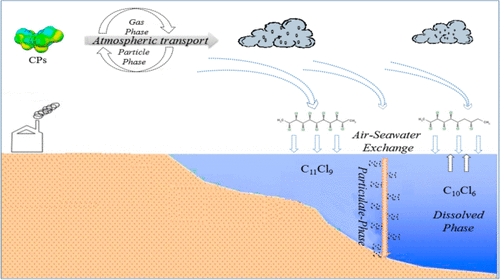当前位置:
X-MOL 学术
›
Environ. Sci. Technol.
›
论文详情
Our official English website, www.x-mol.net, welcomes your feedback! (Note: you will need to create a separate account there.)
Air–Seawater Gas Exchange and Dry Deposition of Chlorinated Paraffins in a Typical Inner Sea (Liaodong Bay), North China
Environmental Science & Technology ( IF 11.4 ) Pub Date : 2018-07-09 , DOI: 10.1021/acs.est.8b01803 Xindong Ma 1, 2 , Yawei Wang 1, 3, 4 , Wei Gao 1 , Yingjun Wang 1 , Zhen Wang 2 , Ziwei Yao 2 , Guibin Jiang 1
Environmental Science & Technology ( IF 11.4 ) Pub Date : 2018-07-09 , DOI: 10.1021/acs.est.8b01803 Xindong Ma 1, 2 , Yawei Wang 1, 3, 4 , Wei Gao 1 , Yingjun Wang 1 , Zhen Wang 2 , Ziwei Yao 2 , Guibin Jiang 1
Affiliation

|
As a group of new persistent organic pollutants, short-chain chlorinated paraffins (SCCPs) and medium-chain CP (MCCPs) have attracted extensive worldwide interest in recent years. However, the data regarding to the environmental behavior, especially in atmospheric transfer and air–seawater exchange, are still sparse. In this study, seasonal marine boundary layer air and seawater samples were collected from Chinese Bohai sea and a fugacity model was built to evaluate the air–seawater diffusion and deposition flux of CPs. Generally, the total CP levels in atmosphere and seawater samples in summer were higher than those in spring, and CPs existed mostly in the gaseous phase in air and the dissolved phase in seawater. For SCCPs, C10 and C11 components were the most abundant homologue groups. For MCCPs, the C14 homologue dominated in the particle phase of atmosphere and particulate phase of seawater. The logarithmic fugacity ratios (log fa/fw) of higher chlorinated congeners (Cl8 to Cl10: 0.71 to 1.32 in May and 1.38 to 2.29 in August) indicated that net deposition was the predominant process, whereas lower chlorinated congeners, especially Cl5 homologue groups in August, showed a trend of net volitization (log fa/fw < −0.5). The results of diffusion and dry deposition fluxes indicated that air–seawater gas exchange of CPs was significantly higher than dry deposition in the sampling areas.
更新日期:2018-07-10



























 京公网安备 11010802027423号
京公网安备 11010802027423号